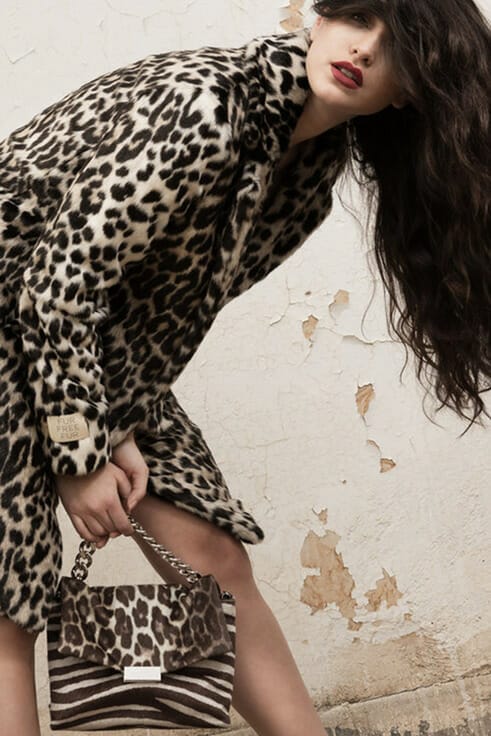I have been extremely fortunate in my photography career. Ten years ago, my family and I stepped off the plane in a small Mediterranean country with no contacts and a single bag of camera equipment. Within a year or so, I had been on television, was shooting for about 6 magazines a month and had work published simultaneously in New York, London, Paris, Rome, Dubai and other major cities.

Students ask me frequently about the business side of their creative career choice. When I ask them what they’ve tried already, they give me a variation of the following list:
- Build a strong portfolio
- Network
- Offer unique services
- Market your business
- Diversity your income streams
- Build a strong brand
Not bad, right? I mean, how often have we, as creatives, heard that same advice? And it’s not just photography students. Musicians, fashion designers and recording artists are all given similar advice on forums, social media, training courses and video tutorials.
Let’s be honest, this list is a great place to start, but what do you do when you’ve done all of those things and you still cannot find clients? How can a lyricist, designer, photographer, or any other artist actually succeed when every other artist is using an identical approach? I’ve asked this question of not only interns who worked at my photography studio, but also clients. Most simply say, “I don’t know, luck?”
Before I even stepped off the airplane in 2012, I had an inside view of the mechanics of how top tier photography studios and other artists stayed in business. After I graduated from the W.P. Carey School of Business at ASU, I’d worked for several years as a business consultant and quite a few of my clients were professional photographers and other visual artists. I coached them on writing business plans, marketing, and other industry strategies, so I knew what it would take to start and run an innovative enterprise. I decided to use my unique situation as a proof-of-concept to test each of the tips I regularly gave my clients. While many artists get their “big break” from pure good fortune, countless more actually use simple, straightforward techniques to create business prospects for themselves.

Based on feedback from students, here are the techniques our team found were the most successful:
Look around to see what businesses are currently paying for the type of work you do right now. What artist are they currently using? Are they following current trends or are they behind the times? Are they innovative?
If you try to contact them, and they already have a contract with another creative, take a look at their closest competitor. I couldn’t even get an interview with a multinational cola company, but after I shot for another bottling company, I was placed on the short list for their next bid.
Find a way to gauge the quality of your work. This can be a tough process, but it’s the only way to really know where you need to improve. For my photography students, I would have them print out a series of 20 images: 5 of their own, 5 from an artist they really admire (a huge reach goal), 5 from an artist they thought was at the same level as them, and last, 5 from an artist they thought was worse than them. Then I’d have them go to a local coffee shop often frequented by industry insiders and ask design professionals to put the images in order of quality. This process would show the student exactly where they ranked in the public’s eye. The key, of course, would be to select images with a similar subject matter and style.

Discover the current market value of your work. Virtually all tutorials we could find prior to developing our own curriculum suggested the creative entrepreneur should take their desired income, divide it by the number of hours they were willing to work, subtract their expenses and use the resulting number to gauge whether their artistic enterprise would be profitable. This is fine, except it doesn’t tell you what someone will actually pay for your work.
Students have a unique advantage. Many businesses will share information with students that they wouldn’t with others. Once you’ve discovered the quality of your work (see the previous exercise), contacting relevant businesses could give you an idea of what to charge. A short, simple email or DM that says, “I’m a creative student enrolled at the ___________ department at ASU, and I was wondering if you could help me understand your budgeting process.” Realize that there are often multiple people or departments in large corporations who purchase art, so be sure to contact all of them. I’ve helped struggling photographers who couldn’t get a response from the marketing team get work with the Real Estate department (images of the buildings, rooms, etc.), the Interior Design department (art for conference rooms), and the Training Department (product photography for training manuals). There are similar needs for music. For example, think about training videos-they need music for their bumpers, etc.
Set yourself apart. The very best way to do this is to be as authentic as possible. Does this piece of music really feel like something that represents you in a deep, meaningful and truthful way? Most art students have grappled with this idea. They may not be sure if something really represents them. In that case, I always recommend an easy exercise to help them focus on their personal values. Who are some people you admire? What are their attributes? What do you love about them? What inspires you about their work? You can use these concepts to tell your own story. How could you use a design to express how you felt at different points in your life? Many people worry about the number of likes their work gets. Don’t worry about that. Find your niche, find your people, and make art for them. A hundred thousand die-hard fans will lead to significantly more commissioned work than millions of likes ever could.
Reserve a small period of time from each project for your own work. On my shoots, I’d always reserve the last 10 minutes for what I wanted to do. In an environment where we’d often have up to 20 people on a shoot, an artist can feel very constrained.
But, if you can set expectations beforehand, there usually isn’t an issue. Here’s an example of one of my shoots. The first image was directly managed by the Creative Director:

The next image is one I shot after the official shoot was over and reflects the setting, angle, color and composition I felt would better represent the feeling of the brand:

The magazine actually selected the second image for publication.
After I started reserving time for myself on every project, 90% of the time, those were the images used in the marketing.
Network properly. So many new entrepreneurs are told to network, but not with whom to network. As a result, many photography students, for example, interact primarily with other photography students, and not only do they not get any leads from these relationships, but their work actually starts to mirror other undergrad’s work. I’ve seen this with fashion students as well. My interns have found higher quality inspiration by going to museums and working with artists in other mediums. It’s amazing to see the work of a musician inspired by an artist who works in oil or a fashion piece inspired by a robotics course.
Use all resources available to you. What are emerging technologies that you have access to as a student? I recently had the chance to see a 3D body scanning device a student put together from a thrift-store gaming console with a movement capture sensor. ASU has makerspaces hosted by the ASU Library and Herberger Institute for Design and the Arts with laser cutting, 3D printing, digital scanning, and more. What if you could partner with an engineering student (see above) who had already built a body scanner, and you could store clients’ scans for future use? What if you made adjustable forms for patterning that would match those scans? What if you learned photogrammetry and could build 3D models of clients from photos they sent you? If you were able to do this, you could send your work all over the world.
Only show your very best work. It’s better to have six solid songs, than to have thirty samples the visitor to your website must slog through to find good ones. Not everything you’ve done since you were five years old is display-worthy. Curate ruthlessly.

Make a personal connection with your clients. AI has been in the news a lot lately but it can’t connect with people the way you can. And, most artistic entrepreneurs are so busy, they forget about the personal connections that can help them weather dips in the economy. You can set yourself apart by being the artist who has cultivated those connections.
In summary, many artists feel like there is a finite amount of work available and that they are in competition with every other artist. Our world is starved for art; it is not a zero-sum equation. If you can be as creative with the entrepreneurial side of things as you are with your art, I am confident you will be able to succeed where many others fail.
Robert Jewett is an ASU staff member and an award-winning commercial photographer who has been regularly featured in several international publications as well as multiple books in the United States. After graduating with his MBA in 2003, he opened a consulting firm, specializing in helping businesses manage the complexities of project management. Unable to find a photographer able to meet the demands of his marketing clients, he began making images himself. This aspect of the enterprise began to garner international attention, and he eventually shot for Dolce & Gabbana, Adidas, Michael Kors, Armani, Guess, Land Rover, Jaguar, Chopard, Panerai and many others. His work may be viewed here.


